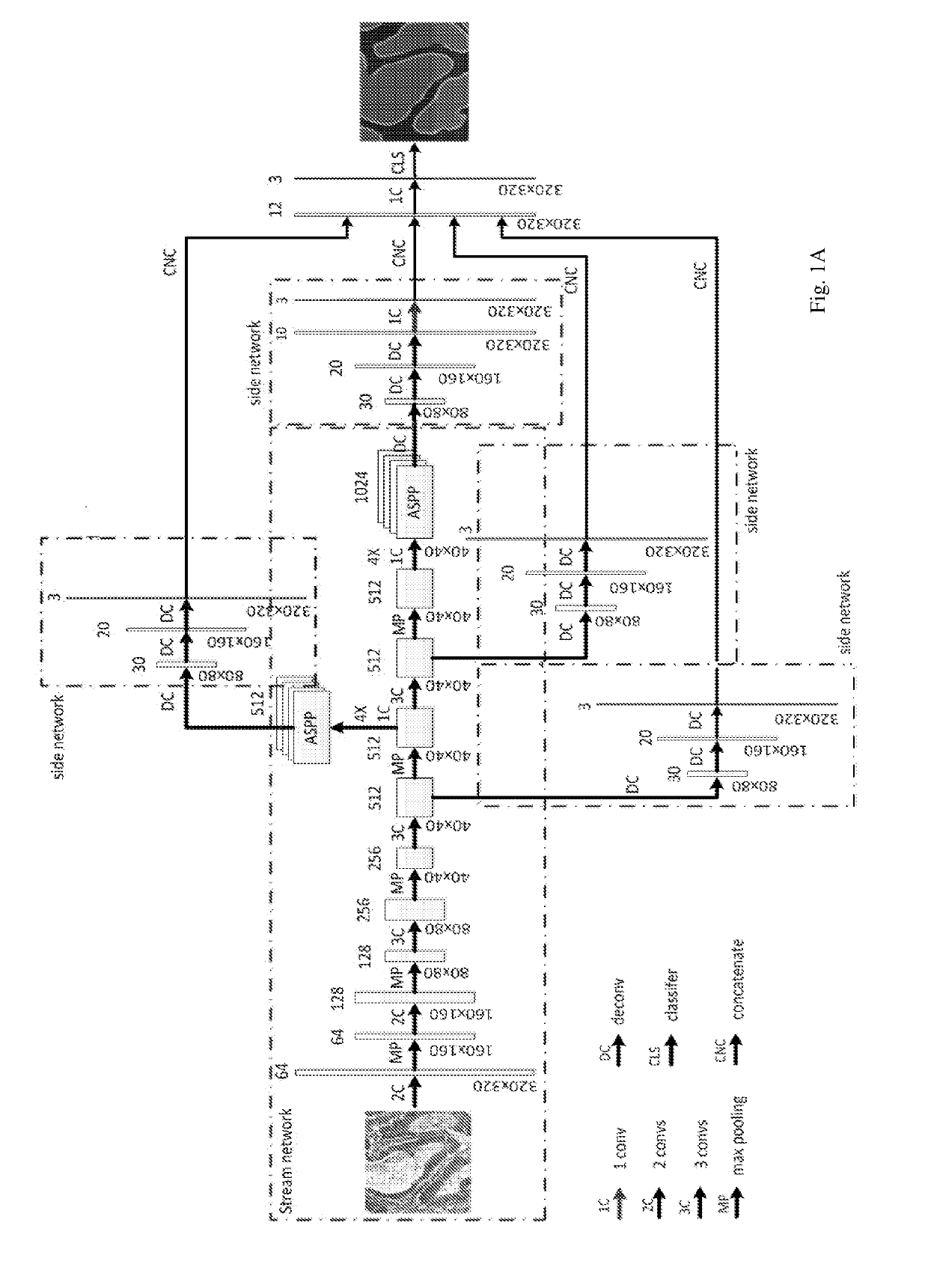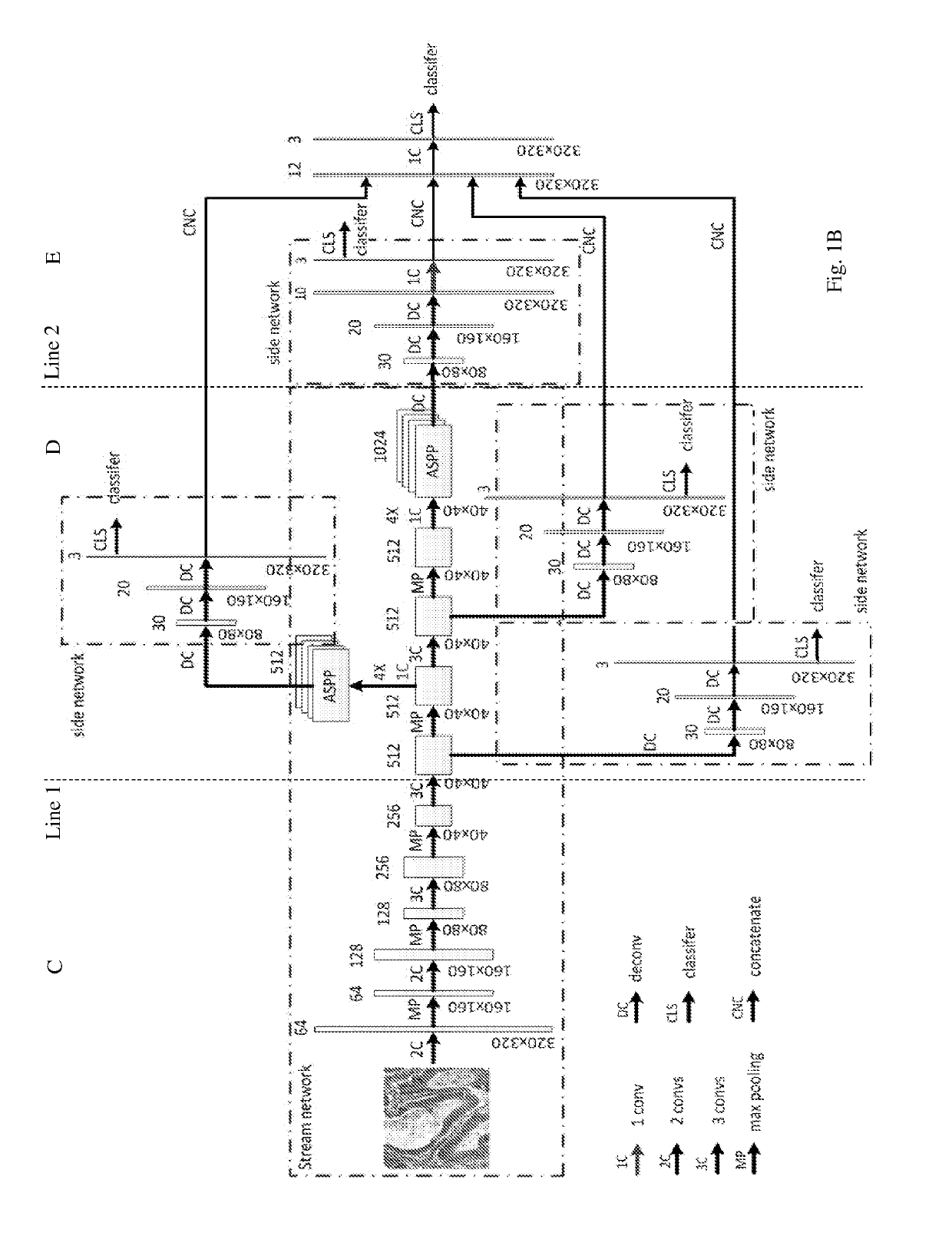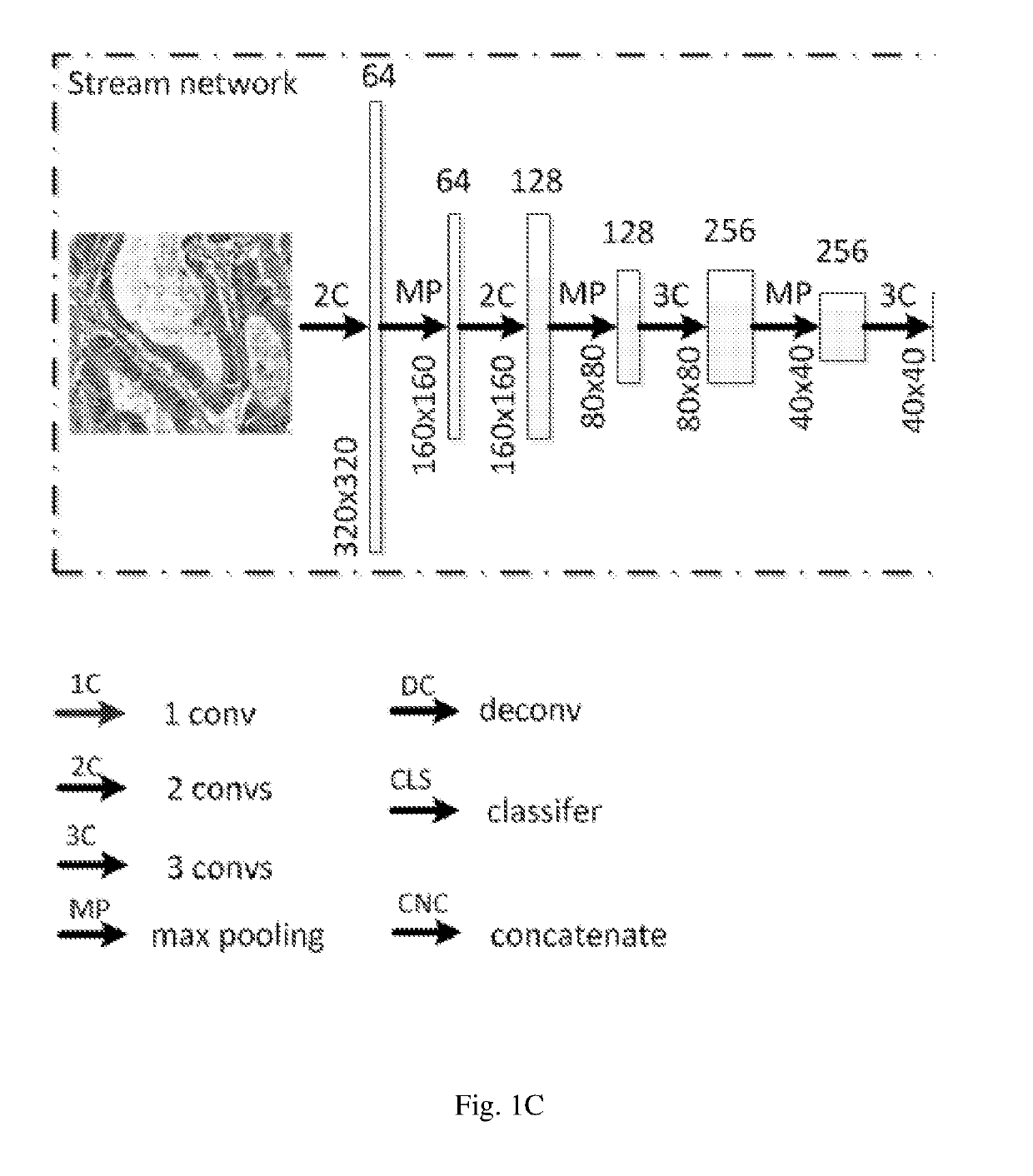Gland segmentation with deeply-supervised multi-level deconvolution networks
a multi-level deconvolution network and deep-supervised technology, applied in image enhancement, medical/anatomical pattern recognition, instruments, etc., can solve the problems of difficult to be learned from data approach to generalize to all unseen cases, laborious process of manually annotating digitalized human tissue images, and simple unfavorable, so as to improve computational efficiency and weight-light learning
- Summary
- Abstract
- Description
- Claims
- Application Information
AI Technical Summary
Benefits of technology
Problems solved by technology
Method used
Image
Examples
Embodiment Construction
[0026]Similar to DCAN, the neural network model according to embodiments of the present invention is composed of a stream deep network and several side networks, as can be seen in FIGS. 1A-B. It, however, differs from DCAN in the following several aspects.
[0027]First, the model of the present embodiments uses DeepLab as a basis of the stream deep network, where Atrous spatial pyramid pooling with filters at multiple sampling rates allows the model to probe the original image with multiple filters that have complementary effective fields of view, thus capturing object as well as image context at multiple scales so that the detailed structures of an object can be retained.
[0028]Second, the side network of the model of the present embodiments is a multi-layer deconvolution network derived from the paper by H. Noh, S. Hong, and B. Han, Learning deconvolution network for semantic segmentation, published in arXiv:1505.04366, 2015. The different levels of side networks allow the model to p...
PUM
 Login to View More
Login to View More Abstract
Description
Claims
Application Information
 Login to View More
Login to View More - R&D
- Intellectual Property
- Life Sciences
- Materials
- Tech Scout
- Unparalleled Data Quality
- Higher Quality Content
- 60% Fewer Hallucinations
Browse by: Latest US Patents, China's latest patents, Technical Efficacy Thesaurus, Application Domain, Technology Topic, Popular Technical Reports.
© 2025 PatSnap. All rights reserved.Legal|Privacy policy|Modern Slavery Act Transparency Statement|Sitemap|About US| Contact US: help@patsnap.com



